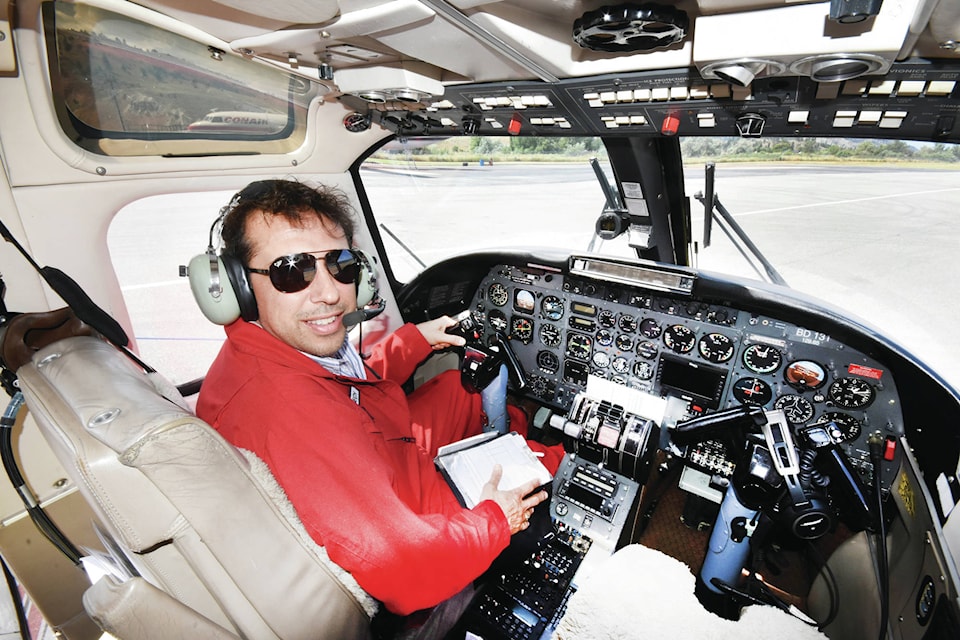As a bird-dog pilot John Grech’s role in helping orchestrate the mid-air ballet of the aerial fire attack teams is a critical component of success but more importantly, safety.
He, along with the B.C. Wildfire Service air attack officer beside him work as the command and control plane for the multi-aircraft battle of wildfires in B.C.
“I have to assess all the hazards— they’re (airtankers) big, they’re heavy and they have a full load of retardant, so there has to be a very precise way to get them in and, just as important, I have to assess how do I get them out of there, what if they lose an engine? Where would they go? How would they be able to climb out of this mountainous terrain without killing themselves?” said Grech, who is in his first year on the job with Conair Aerial Firefighting. “But there is still an element of danger.We can’t move the mountains, but I’ve flown in many different elements of aviation in my career, but I’ve found this to be the most challenging and the most rewarding.”
That experience includes military and similar bird-dog work in Ontario and operating his own air service in Malta.
At the controls of the powerful, twin-engine plane, Grech must first fly the route the tankers will take to drop the retardant, as well, he will sometimes lead them in through the smoke or follow as the need dictates.
“We may have five tankers coming in and we have to provide air traffic control for them, find them different altitudes,” said Grech. “I have to manage the air space to make sure there is no conflict or to cause an air-to-air collision. It’s being an air traffic controller while you’re flying the airplane.
“It’s a lot of pressure, lots of adrenaline, but it’s just part of the job and I love it.”
Veteran Conair pilot Grahame Wilson, who now flies the airtankers spent five years as a bird-dog pilot himself and knows how critical having someone like Grech doing the job is.
“I am looking out at what’s going on but I need his guidance to point out things that I might not see,” he said. “We are a two-pilot airplane and on the fire my attention is mostly outside, watching what the bird-dog is doing and listening and understanding what he’s telling me.”
